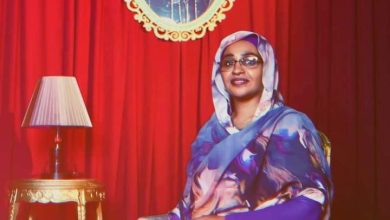Mardoum: Rich Cultural Heritage of Baggara

Khartoum – Sudan Events
The Baggara people residing in the southwest region of Kordofan, Sudan, are widely recognized for their captivating dance form known as the mardoum.
This unique form of dance is characterized by a synchrony of rhythmic foot strikes against the ground, producing a sonorous and melodic sound.
The mardoum serves as a testament to the rich cultural heritage of the Baggara community and has become synonymous with their vibrant traditions.
Abdel Qader Salem, a renowned musician, has played a pivotal role in preserving the beauty and authenticity of the mardou. His iconic compositions, such as “Allah Al-Lemony” and “The Light Has Come to Me,” have become synonymous with this particular dance form.
The mardou distinguishes itself from another dance known as the jarari, primarily due to its rapid tempo and dynamic energy.
This contrast in rhythm may partially be attributed to the diverse environments and livestock that each group represents.
The Baggara people predominantly engage in cattle-rearing and horseback riding, which may account for the vigorous and lively nature of the mardou.
Furthermore, linguistic patterns also impact the rhythm of these traditional dances.
The Baggara’s speech is characterized by a swift and robust delivery, while the Abbala people residing in the northern region employ a softer and more melodic speech style, often punctuated by a distinct gurgling sound.
These variations in speech patterns are reflected in the corresponding rhythms of the mardou and jarari, respectively.
In conclusion, the mardou holds a significant position in the cultural tapestry of the Baggara community. Its captivating melodies, rhythmic footwork, and linguistic influences serve as a testament to the vibrant traditions and rich heritage of this illustrious group of people.



